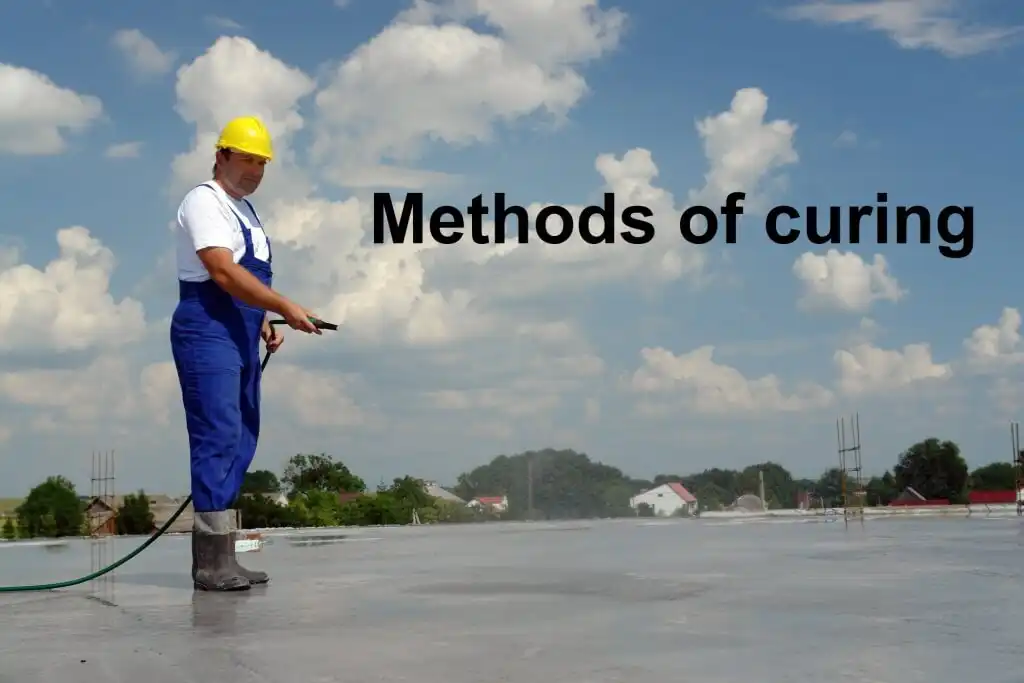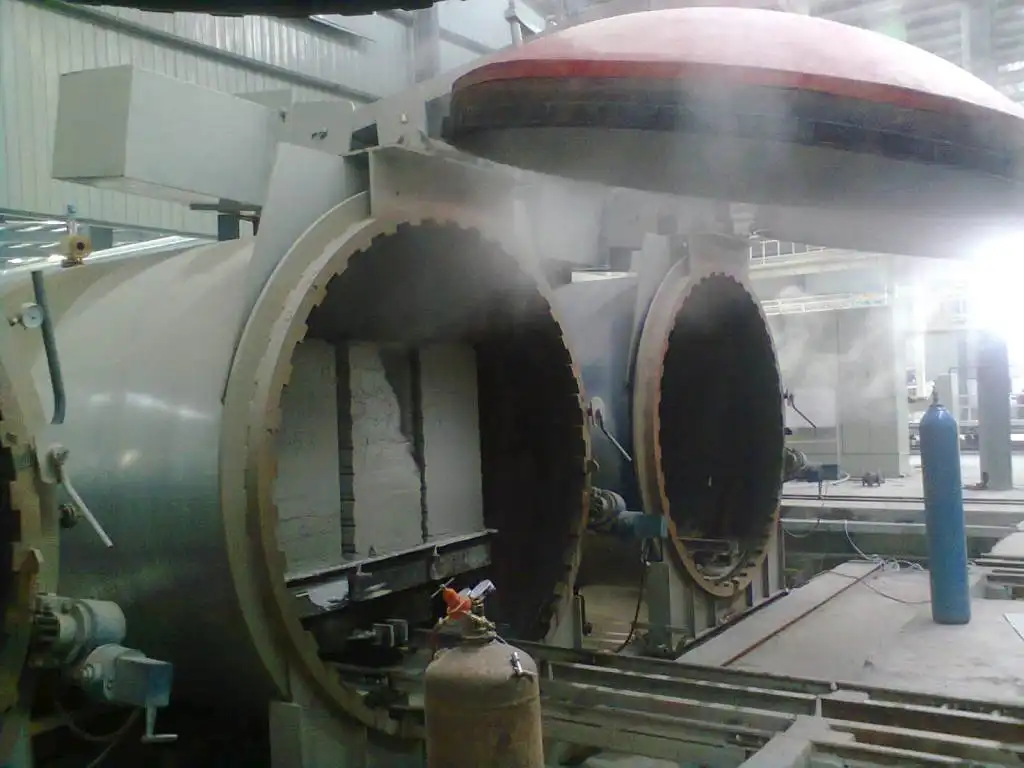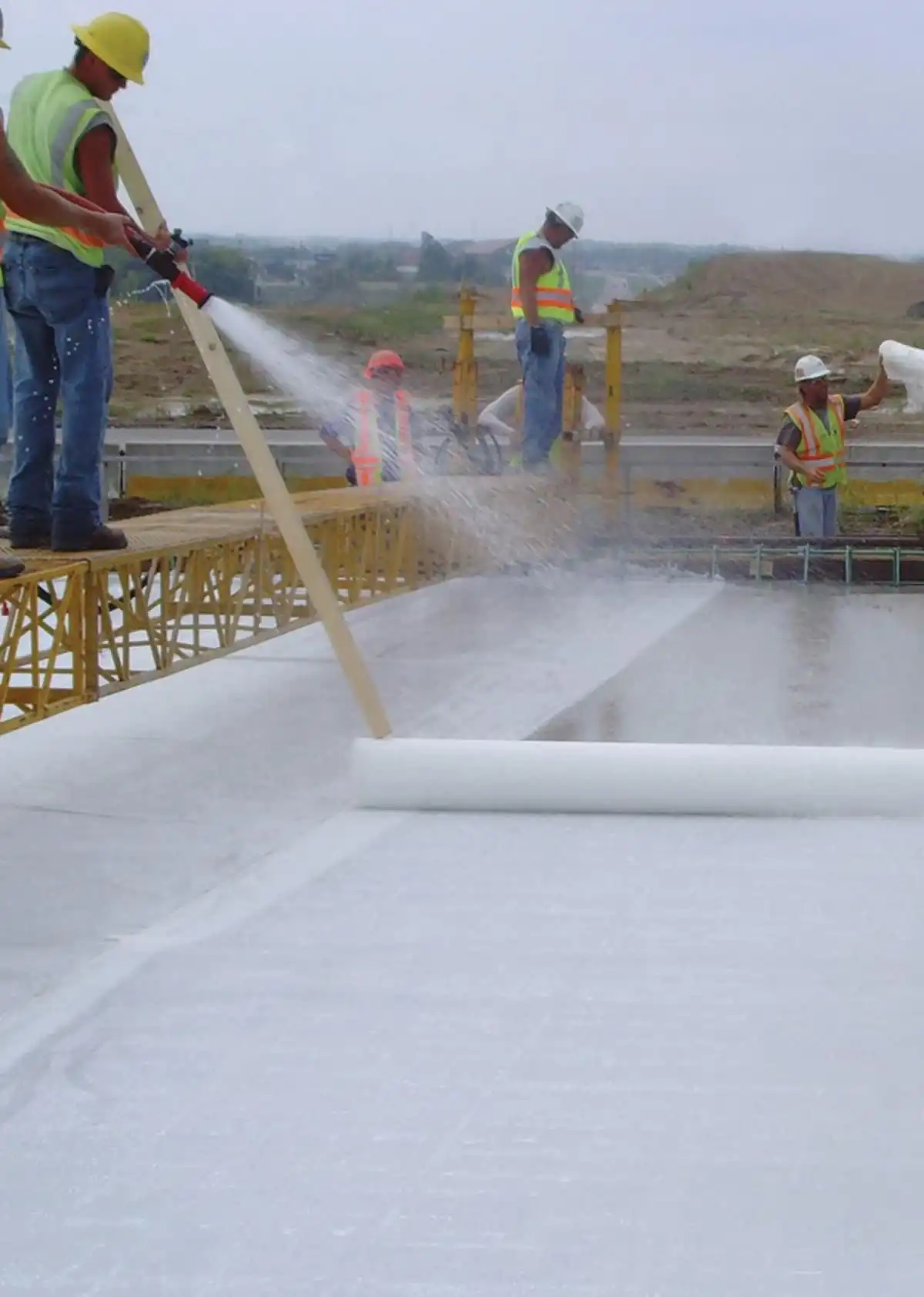How do we cure concrete, and how do we know it’s working? (methods & measurement)
Once concrete is poured, the curing process begins! There are several effective ways to ensure concrete cures properly:
• Wet Curing: Keeping the concrete continuously wet by ponding water, spraying, or using wet coverings like burlap.
• Membrane Curing: Applying a liquid membrane-forming curing compound that seals the surface.
• Sheet Curing: Covering the concrete with impervious sheets like plastic film to prevent moisture loss.
But how do we know if it’s curing effectively? Measuring concrete maturity is key! Some common ways include:
• Temperature & Time-Based Methods: Using sensors embedded in the concrete to track its temperature history, which helps estimate its strength development over time.
• Strength Testing (e.g., Cylinder/Cube Tests): Taking samples and testing their compressive strength at various ages. While not a direct “curing measurement” in the field, it’s the ultimate indicator of successful curing.
• Non-Destructive Testing (NDT): Methods like rebound hammer or ultrasonic pulse velocity can provide an indication of concrete quality and strength development.
Understanding these methods is vital for ensuring long-lasting, high-performance concrete structures. Up next: The pros and cons of these measuring techniques!
Curing Measurement: What are the advantages & disadvantages?
We discussed what concrete curing is and some methods for curing and measuring. Now, let’s look at the pros and cons of the common concrete curing measurement techniques:
1. Temperature & Time-Based Methods (Maturity Meters):
- Advantages: Real-time data, non-destructive, provides early strength estimations, useful for optimizing formwork removal or post-tensioning.
- Disadvantages: Requires calibration for specific concrete mixes, only estimates strength (doesn’t replace actual tests), sensor placement is critical.
2. Strength Testing (Cylinder/Cube Tests):
- Advantages: Direct measurement of compressive strength (the ultimate proof), universally accepted.
- Disadvantages: Destructive (samples are destroyed), time-consuming (samples need to cure for specific periods), requires lab testing, doesn’t give real-time site data.
3. Non-Destructive Testing (NDT) (e.g., Rebound Hammer, Ultrasonic Pulse Velocity):
- Advantages: Quick and easy to perform on-site, non-destructive, can assess uniformity.
- Disadvantages: Provides an indication of strength, not a direct measurement; results can be influenced by surface conditions, requires experienced operators for accurate interpretation.
Choosing the right measurement method (or combination) depends on the project’s specific needs, budget, and desired level of accuracy. It’s all about ensuring the concrete performs as it should for decades to come!



